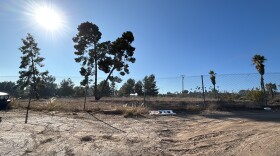California is investing $3 million in an effort to allow researchers to predict when and where ocean waters near Imperial Beach may be contaminated.
The ocean off the coast of Imperial Beach has suffered decades of contamination which includes trash, toxic chemicals and untreated sewage runoff.
Last week, homes in Imperial Beach, Chula Vista, San Diego and on the Silver Strand were under a boil-water order because a test sample came back positive for E. coli contamination. The order was lifted this past weekend after additional tests found the water to be safe.
Local officials are frustrated by Gov. Gavin Newsom and President Joe Biden’s refusal to issue states of emergency which could free up state and federal funding to fix the cross-border sewage issues.
“Over 110 billion gallons of sewage have poured into the coastline, here in Imperial Beach, since 2018,” said David Alvarez, a California Assembly member who represents San Diego. “It is unacceptable for a beach to be closed as long as it’s been here, anywhere else in our country, anywhere else in California and that’s why it’s time to act.”
At a news conference on Aug. 25, Alvarez joined California state Senators Steve Padilla and Catherine Blakespear, Imperial Beach Mayor Paloma Aguirre and researchers from the Scripps Institution of Oceanography to talk about a new forecasting tool that will help them predict when the ocean will be full of pathogens, and where those pathogens are headed.
State lawmakers secured funding for the project in the latest state budget.

San Diego researchers plan to use that money to develop the tool which will not stop the flow of contaminants, but it will help local officials let residents and tourists know when higher risks are coming.
“We anticipate having five-day forecasts of the pathogen loads at the beach and human health risks,” said Falk Feddersen of the Scripps Institution of Oceanography. “The vision is that a family, a local family or tourist can look at an app and see, just like you can see with a weather model with weather predictions, whether it’s a good day to take your kids to the beach on the weekend.”
San Diego researchers have already developed a physical model that shows how ocean and estuary currents can move pollution along the south county coastline.
The new tool will incorporate how long target pathogens survive in the ocean.
“We’ll conduct regular water sampling at beach and coastal locations to pinpoint the types of pathogens that are present and their abundances,” said Andrew Barton of the Scripps Institution of Oceanography. “We’ll also sample extreme events such as heavy rainfall and associated runoff.”
The model could also allow local officials to see if the capital projects aimed at slowing the flow of cross-border pollution are actually having a positive impact on the ocean.







